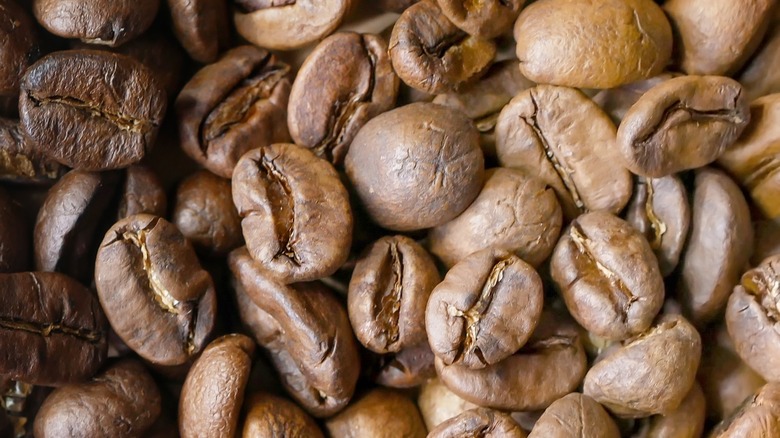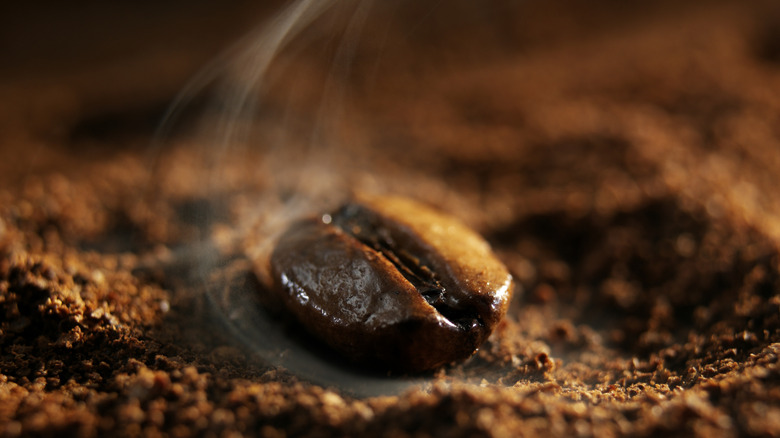The Processing Technique That Makes Cinnamon Roast Coffee Unique
For the average coffee drinker, the special terms bandied about by those "in the know" — i.e. roasters and enthusiasts — can be confusing. This is why when we hear the words "cinnamon roast," we're inclined to think that it has something to do with the familiar spice. However, this is not the case. Far from being roasted with actual cinnamon, this variety is actually all about roast time and the color of the coffee beans themselves.
A cinnamon roast is within the light roast category of coffee. The beans are roasted to a light brown — similar to the color of cinnamon bark, hence the name. The flavor of a cinnamon roast is said to be on the grassy side, with a highly acidic, citrusy profile. Depending on how you like your coffee, this can either be appealing or off-putting. Whereas adding proper cinnamon to the beans gives the coffee a natural sweetness and spice, cinnamon roasts tend to be far more bitter.
But how is a cinnamon roast actually roasted? When does a roaster know when the right color has been achieved? Well, it has everything to do with another industry term: the first crack. Coffee roasters will typically determine their light, medium, or dark roasts based on the crack stage of the beans, of which there are two.
Roasting between the cracks
Cinnamon roast coffee is dropped from the roaster very soon after the first crack appears on the beans. This unique processing accounts for both the roast's light color and its acidic flavor profile. It also results in a lower loss of weight in the total volume of the roast, making it a fantastic cost-cutting option. But what exactly is the first crack?
Coffee goes through two cracking stages during its roasting. The first crack occurs at the point when the beans are roasted just enough to become edible. To get to this stage, the coffee is put into the roasting equipment and brought up to temperature. The roasters look for both visible and audible cracks, which almost sounds like popcorn popping. This occurs because the moisture inside of the bean is creating steam, expanding it, and causing it to crack. Light and medium roasts are typically roasted between the first and second crack, while medium-dark and dark roasts are roasted beyond the second crack.
Because cinnamon roasts are finished so early in the process, they do not have time to develop more complex flavors. This does not make them bad coffee, but rather a special variety that is far more acidic than darker roasts — made through a method for roasting large batches of coffee.

